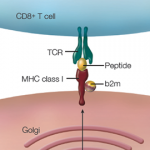Patient Care
Dr. Van den Bosch outlined several steps of his approach to caring for patients with SpA.
Strategy #1: His first approach centers on correctly using older drugs, including appropriately dosed non-steroidal anti-inflammatory drugs (NSAIDs), for SpA. In a study by van der Heijde et al., 387 patients with ankylosing spondylitis were randomized to receive one of two doses of etoricoxib (a cyclooxygenase 2 selective inhibitor) vs. 1,000 mg of naproxen daily vs. placebo. Over the initial six weeks of study, researchers found the patients receiving either etoricoxib or naproxen achieved statistically significant improvements in all co-primary end points: patient assessment of spine pain, patient global assessment of disease activity and the Bath Ankylosing Spondylitis Functional Index.2
Dr. Van den Bosch also presented data indicating rates of partial remission in axial SpA, per the Assessment in SpondyloArthritis International Society (ASAS), with the use of naproxen are similar to the rates of minimal disease activity in PsA with the use of methotrexate. However, it should be noted that it’s challenging to compare different outcome measures in different diseases. Nevertheless, NSAIDs retain an important role in controlling disease activity for many patients, and rheumatologists would be wise to not neglect these therapies.
Strategy #2: Dr. Van den Bosch’s next approach is based on the concept of using newer, more advanced medications to care for patients. Good data exists that minimal disease activity can be reached in such conditions as PsA with several modalities of biologic and targeted synthetic disease-modifying anti-rheumatic drugs (DMARDs). Perhaps more challenging is knowing how to compare some of these medications in a head-to-head fashion.
Mease et al. compared the efficacy and safety of ixekizumab, an IL-17 inhibitor, with adalimumab, a tumor necrosis factor (TNF) α inhibitor, for the treatment of patients with PsA for whom conventional synthetic DMARD therapy proved inadequate. The authors found ixekizumab was superior to adalimumab in achieving simultaneous improvement of joint and skin disease, as measured by ACR50 criteria, and a 100% improvement from baseline in the Psoriasis Area and Severity Index (PASI-100).3 More head-to-head trials would be helpful in allowing clinicians to select one biologic or targeted synthetic DMARD over another in an effort to find the right therapy for each patient.
Strategy #3: This approach revolves around treat-to-target and tight disease control parameters. Dr. Van den Bosch pointed to the TICOPA trial, which sought to use an early intervention, treat-to-target approach for the care of patients with PsA. In this study, Coates et al. demonstrated tight control of PsA disease activity significantly improved joint and skin outcomes for patients with newly diagnosed disease. No unexpected severe adverse events were noted.4
